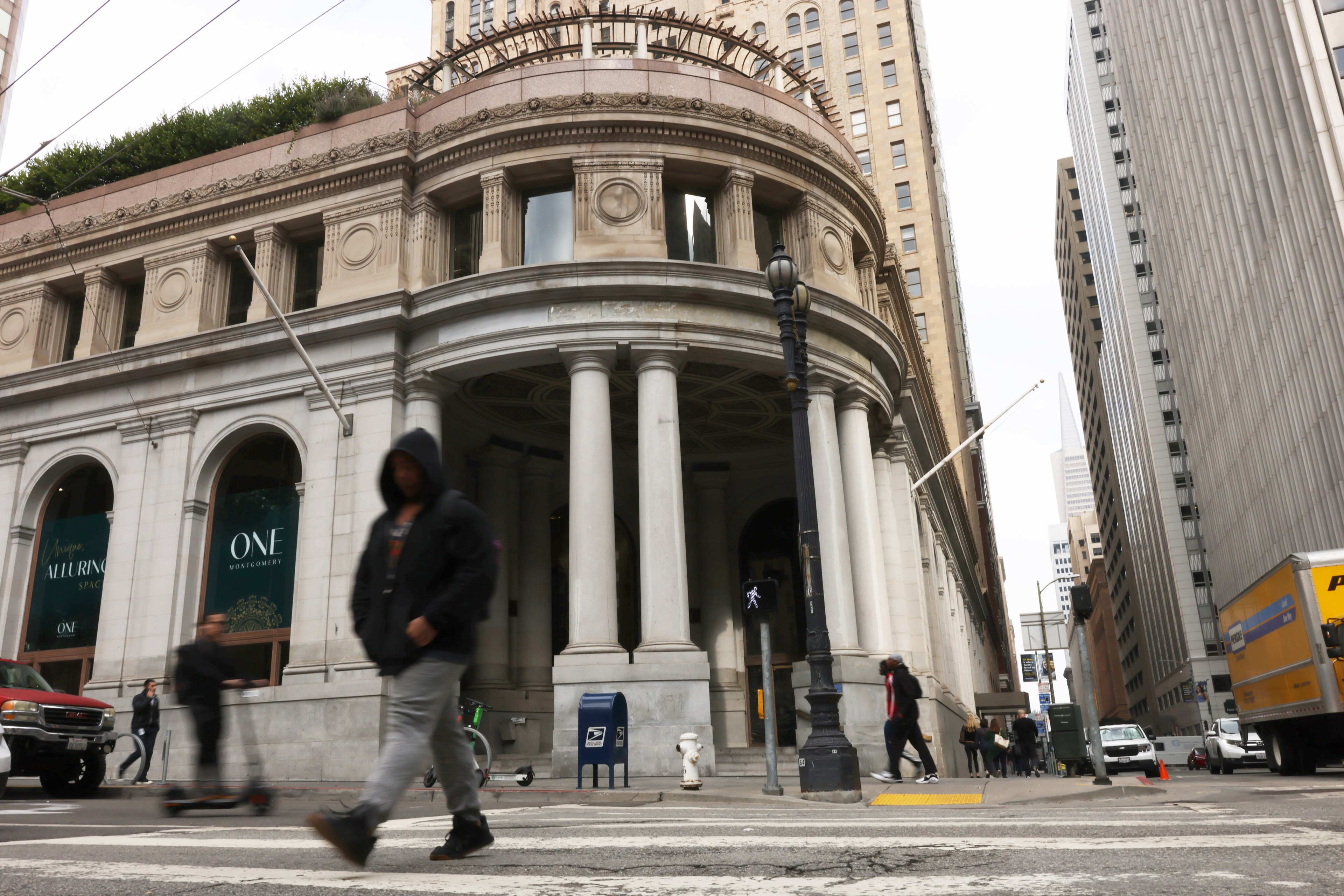There’s plenty of doom to go around in San Francisco, but a doom loop remains a distant possibility. Instead, the near term may be a kind of purgatory as the city deals with the ramifications of a mass work culture shift and realigns its economy.
A major theme of the University of California Berkeley event “From Doom to Boom in San Francisco” was the relationship between upheaval in the commercial real estate industry and the potential economic downward spiral for the city.
During the peak of the tech boom, job growth rates were among the highest in the nation and office vacancies were at an all-time low as companies fiercely competed for limited space.
READ MORE: San Francisco Doom Loop Reversal Ideas Include a Soccer Stadium, a UC Campus and a Carnival
Now, vacancy rates have reached a record 34% and continue to trend higher, according to real estate firm CBRE. The lack of tenants in the market has combined with an interest rate environment that has made it difficult to build or sell properties.
“I think the doom per se is sort of a given, but the loop question is an interesting one,” said Ted Egan, San Francisco’s chief economist.
Egan said while there are plenty of factors weighing down the city’s economy, issues that have plagued other “doom loop" cities, along with population outflows and skyrocketing unemployment, have not materialized in San Francisco.
However, what will materialize are painful budget cuts.
By fiscal year 2027-28, the city estimates a $1.2 billion-plus budget deficit due in large part to a decline in tax revenue from commercial real estate.
“It’s not the kind of thing we haven’t faced before,” Egan said, adding that per-capita tax revenue has doubled in the last 20 years. “It certainly doesn’t seem inevitable to me that the city is going to have to cut the kinds of services that are going to make people say I just don’t like San Francisco anymore.”
Egan also pointed out countervailing forces like lower rents and housing costs, which could attract new businesses and residents. He added that while drug use and homelessness are often raised as evidence of the doom loop spiral, he’s skeptical.
“These are long-standing problems in San Francisco, and it hasn’t in the past affected people commuting to Downtown office buildings,” Egan said. “It’s a great conversation to have. It’s just not a great explanation for San Francisco's economic problems.”
Hybrid Work Here To Stay
Instead, the experts agreed that the key to these economic challenges is a shift toward working from home. Panelist Nicholas Bloom, a Stanford University economist who became known during the pandemic for his prescient research around remote work, recently published a New York Times op-ed titled “The Five-Day Office Week Is Dead.”
“I know the media is full of stories like apparently Zoom is calling everyone back in the office,” Bloom said. “If you look at the big data, that’s just not true.”
Bloom argues hybrid work is the way of the future and cited research showing work patterns stabilizing at around 28% of days at home. According to survey data, workers equate working from home two to three days a week to about 8% more pay.
A pattern that has emerged from the hybrid shift is a “donut effect” of people moving out of downtowns and into surrounding suburbs.
“San Francisco is stable,” Bloom said. “It’s had a big negative shock, but I don’t think it’s in a doom loop. I think it’s down, but it’s definitely not out.”
One quirk has been a rise in people playing golf during the day. That could presage how cities need to move away from office-work-centered economies, Bloom said.
“There’s been a swiveling of time use,” Bloom said. “The key to me is cities rotating more towards consumption activities and leisure and a bit away from offices.”
Not everything had a sunny side. The future of public transit—which has seen steep ridership declines—was a common cause for concern. So, too, was the outflow of lower-income service workers that would enable a shift to a leisure-based economy.
Nancy Wallace, a UC Berkeley real estate economist, said new federal funding could provide dollars for environmentally beneficial projects in addition to state tax credits and local tax incentives.
While she’s skeptical of a wave of conversions turning office buildings into housing, Wallace said repositioning older offices into innovation hubs could be a strategy for a region still dominant in startup funding and activity.
That could be part of a larger economic revitalization strategy for Downtown enabled by lower building values, which includes the promotion of 3D printing manufacturing, AI innovation and research offices, satellite university campuses and other research labs.
Doom loop fears have meant cities are more willing to limit restrictions for investment and development, even in San Francisco, a city notorious for its bureaucratic barriers.
“If you’re in this business, you know that there is dry capital waiting to come into the markets—here’s actually quite a lot," Wallace said. “The other interesting thing is the cities are now wanting to be accommodated, even San Francisco.”
